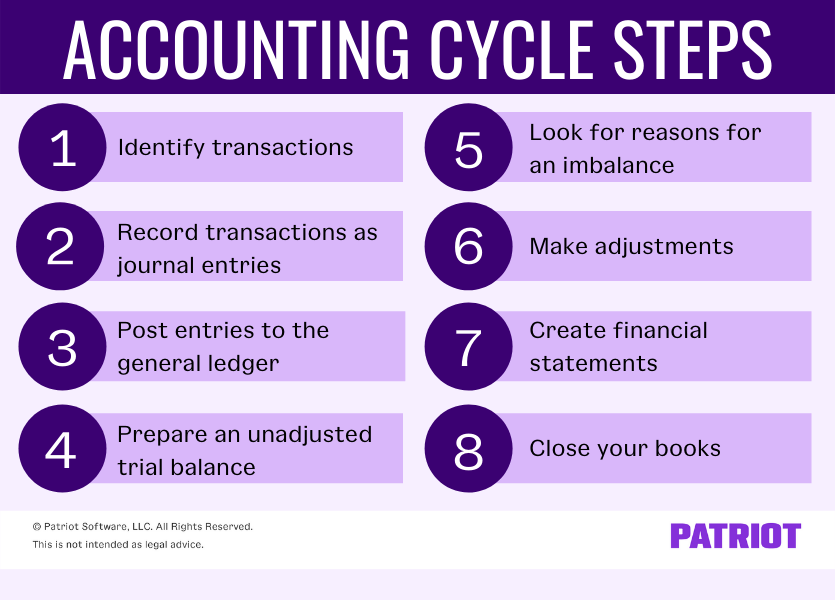
The better prepared your staff is, the more efficient they can be. This is a straightforward guide to the chart of accounts—what it is, how to use it, and why it’s so important for your company’s bookkeeping. In other words, deferrals remove transactions that do not belong to the period you’re creating a financial statement for. Learn how to build, read, and use financial statements for your business so you can make more informed decisions.

Identify and Analyze Business Transactions
The accounting cycle breaks down financial management responsibilities into eight essential steps to identify, analyze and record financial information. It serves as a clear guideline for completing bookkeeping tasks accurately. The first step to preparing an unadjusted trial balance is to sum up the total credits and debits in each of your company’s accounts.
Step 4: Unadjusted Trial Balance
- The main content and items of the Profit and loss account include the revenues, cost of goods sold, gross profit, all expenses, and the year-end income.
- We collaborate with business-to-business vendors, connecting them with potential buyers.
- This ICT Sector Guidance is built on, and in conformance with, the GHG Protocol Product Standard.
- Learn how to build, read, and use financial statements for your business so you can make more informed decisions.
An example of an adjustment is a salary or bill paid later in the accounting period. Because it was recorded as accounts payable when the cost originally occurred, it requires an adjustment to remove the charge. Bookkeepers or accountants are often responsible for recording these transactions during the accounting cycle. Simply put, the credit is where your money is coming from, and the debit is what it’s going towards.
Reversing Entries: Optional step at the beginning of the new accounting period
Is keeping up with the accounting cycle taking up too much of your time? With Bench, you get access to your own expert bookkeeper to collaborate with as you grow your business. Our secure bank connections automatically import all of your transactions for up-to-date financial reporting without lifting a finger.
After the unadjusted trial balance has been calculated, the worksheet can be analyzed. Worksheets allow bookkeepers to identify adjusting entries so that the accounts are balanced. This step is also where bookkeepers will ensure that debits and credits are equal.
Single-entry accounting is simple and goes hand-in-hand with cash-basis accounting. It only records a single entry for each transaction, like a chequebook. It records where cash is going, as well as where it’s how to buy a business coming from. The accounts are closed to a summary account (usually, Income Summary) and then closed further to the capital account. Again, take note that closing entries are made only for temporary accounts.
Businesses need to conduct the eight-step accounting cycle for each accounting period. That accounting period might be a month, a quarter, or a fiscal or calendar year. This article explains what the accounting cycle is, the steps involved, and how following these steps can elevate your bookkeeping and financial reporting. Accurate books and records are the foundation of a healthy business, and it all starts with the accounting cycle.
It is important that these transactions are identified as they occur. While this used to be done manually, accounting software now makes this task easy. What was once difficult to stay on top of is now easy for anyone to manage. The accounting process starts with identifying and analyzing business transactions and events. Not all transactions and events are entered into the accounting system. The process nonetheless does not end with the presentation of financial statements.






